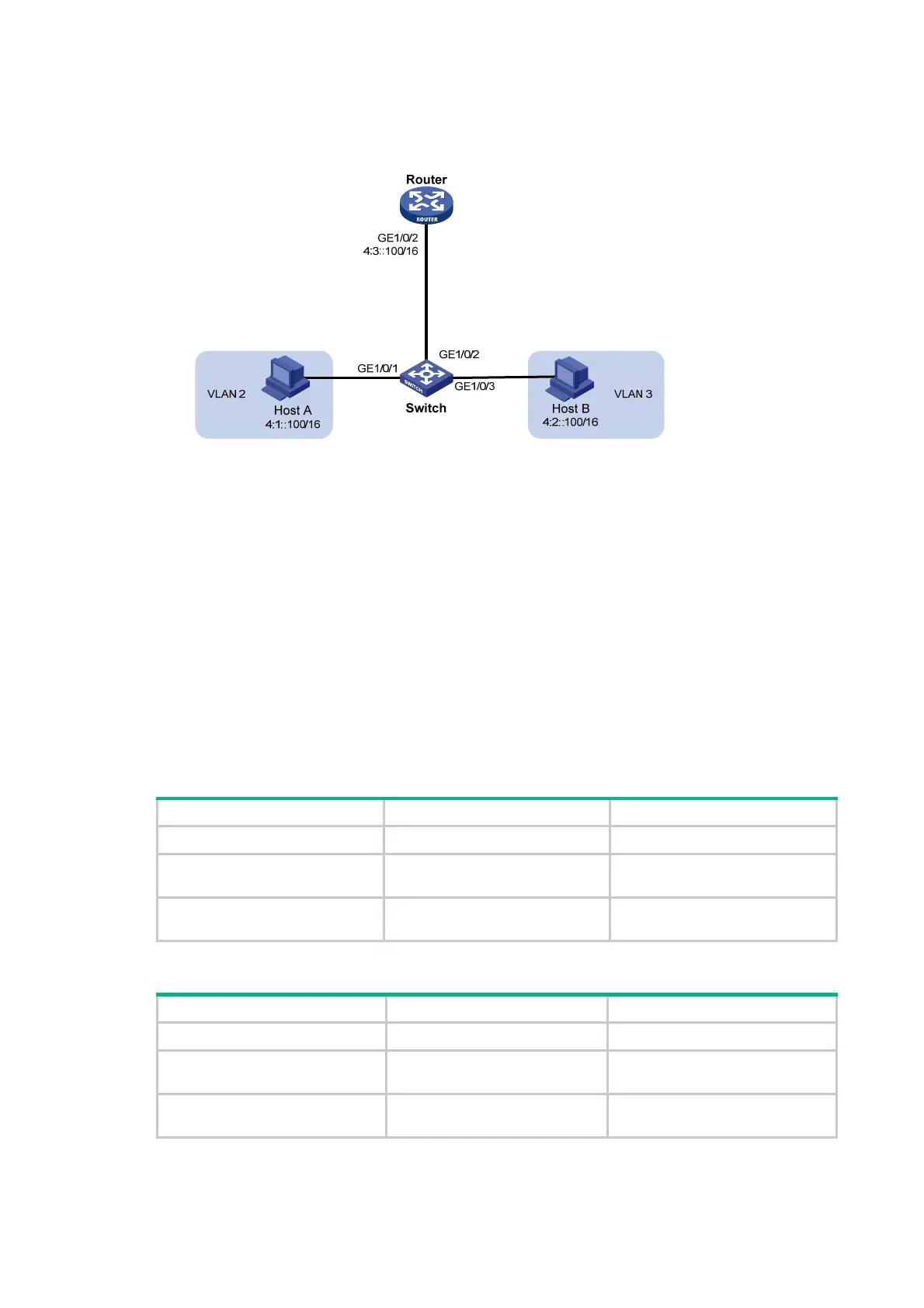242
As shown in Figure 90, Host A belongs to VLAN 2 and Host B belongs to VLAN 3. Host A and
Host B connect to GigabitEthernet 1/0/1 and GigabitEthernet 1/0/3, respectively.
Figure 90 Application environment of local ND proxy
Because Host A's IPv6 address is on the same subnet as Host B's, Host A directly sends an NS
message to obtain Host B's MAC address. However, Host B cannot receive the NS message
because they belong to different VLANs.
To solve this problem, enable local ND proxy on GigabitEthernet 1/0/2 of the router so that the
router can forward messages between Host A and Host B.
Local ND proxy implements Layer 3 communication for two hosts in the following cases:
{ The two hosts connect to ports of the same device and the ports must be in different VLANs.
{ The two hosts connect to isolated Layer 2 ports in the same isolation group of a VLAN.
{ If super VLAN is used, the two hosts must belong to different sub VLANs.
{ If Private VLAN is used, the two hosts must belong to different secondary VLANs.
Configuration procedure
You can enable common ND proxy and local ND proxy in VLAN interface view, Layer 3 Ethernet
interface view, or Layer 3 Ethernet subinterface view.
To enable common ND proxy:
Step Command Remarks
1. Enter system view.
system-view
N/A
2. Enter interface view.
interface
interface-type
interface-number
N/A
3. Enable common ND proxy.
proxy-nd enable
By default, common ND proxy is
disabled.
To enable local ND proxy:
Step Command Remarks
1. Enter system view.
system-view
N/A
2. Enter interface view.
interface
interface-type
interface-number
N/A
3. Enable local ND proxy.
local-proxy-nd enable
By default, local ND proxy is
disabled.
